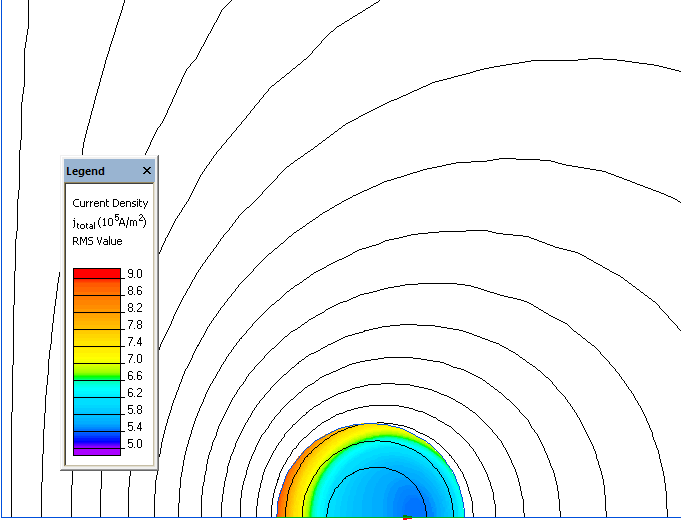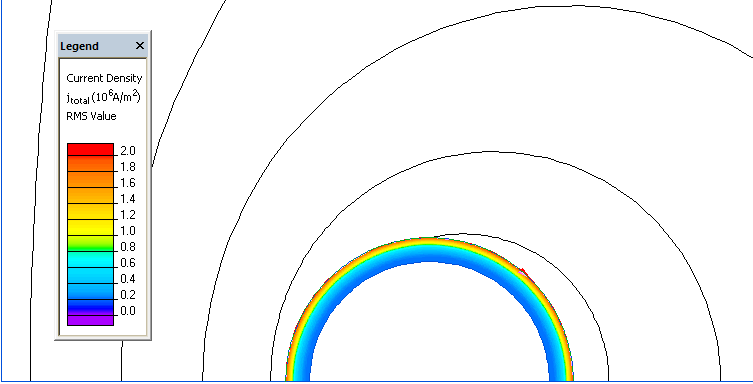Proximity effect
QuickField simulation example
In the lab the current density is defined by measuring the voltages on the conductor segments, the phase of current is measured separately by the digital phasemeter.
Problem type
Plane-parallel problem of AC magnetics.
Geometry
Given
Relative magnetic permeability of steel μ= 100
Total current I=300 A, frequency f=50 Hz
Electric conductivity of copper σ=57 MS/m
Electric conductivity of steel σ=10 MS/m.
Task
Find the current density distribution along the cross section of long parallel conductors. Two types of conductors are analyzed: two copper rods and two steel tubes.
Solution
Due to problem symmetry only upper-right quarter aOb is defined, and at the axes of symmetry the boundary conditions are set.
At the horizontal axis of symmetry (line Oa) Ht=0. At the vertical axis of symmetry Ob Bn=0. Equation B=rot A in the cylindrical coordinate system leads to A=const at the axis Ob. Field fades at the infinity so at the other boundaries A=0.
Results
Current density distribution along the line Oa for copper rods.

Current density distribution along the steel tube perimeter (from the point e to point f clockwise).

Reference: Wikipedia: Proximity effect
- Video: Proximity effect. Watch on YouTube.
- View simulation report in PDF
- Download simulation files (files may be viewed using any QuickField Edition).